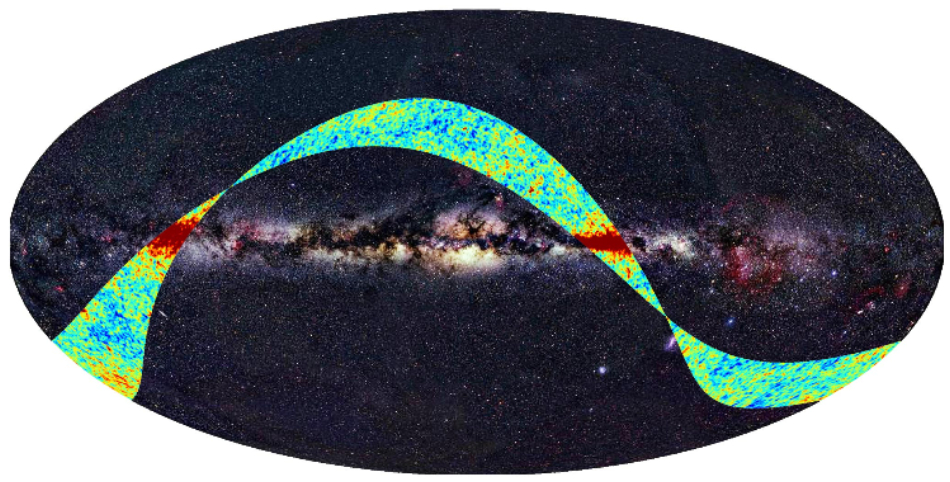
 Credit: ESA, LFI & HFI Consortia; Background optical image: Axel Mellinger
Credit: ESA, LFI & HFI Consortia; Background optical image: Axel Mellinger
Light from the Dawn of Time
As we all know, the Universe began about 13.73 billion years ago from a state of nearly infinite density and temperature. The intense, high-energy radiation from this time diffused and cooled until at the present time its seen as a weak glow of microwave radiation which permeates the entire sky. Astronomers puzzle at the fact that this radiation, which must have been extremely smooth, somehow produced the lumpy structure we see today in the form of galaxy clusters, stars and people (some more lumpy than others). And why is space so flat? And why do disparate pieces of the Universe, places which could not possibly have known of each other's existence when they were formed, have exactly the same temperature? And what is this anti-gravitational force called Dark Energy about, and where does it come from? It almost seems that the more we examine the Universe the more questions we have. The image above shows a strip of the cosmic microwave sky superimposed on an optical background image. This is one of the first observations obtained with the new Planck satellite. Named after the famed physicist Max Planck, the Planck mission was built by the European Space Agency with significant participation from NASA. It orbits about 1.5 million kilometers (930,000 miles) from earth, in a special place called the second Lagrange Point. Planck will scan the sky and provide precise measurements of the tiny fluctuations in the cosmic microwave background, which provide the seeds of the structure we see today.
Published: September 28, 2009
<
HEA Dictionary ● Archive
● Search HEAPOW
● Other Languages
● HEAPOW on Facebook
● Download all Images
● Education ● HEAD
>
Each week the HEASARC
brings you new, exciting and beautiful images from X-ray and Gamma ray
astronomy. Check back each week and be sure to check out the HEAPOW archive!
Page Author: Dr. Michael F. Corcoran
Last modified Monday, 26-Feb-2024 17:36:25 EST


